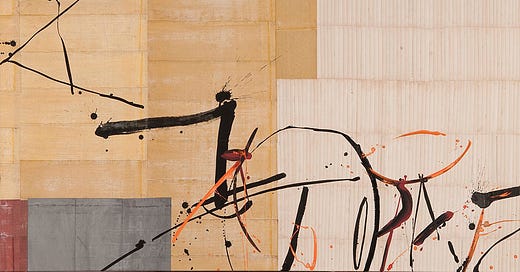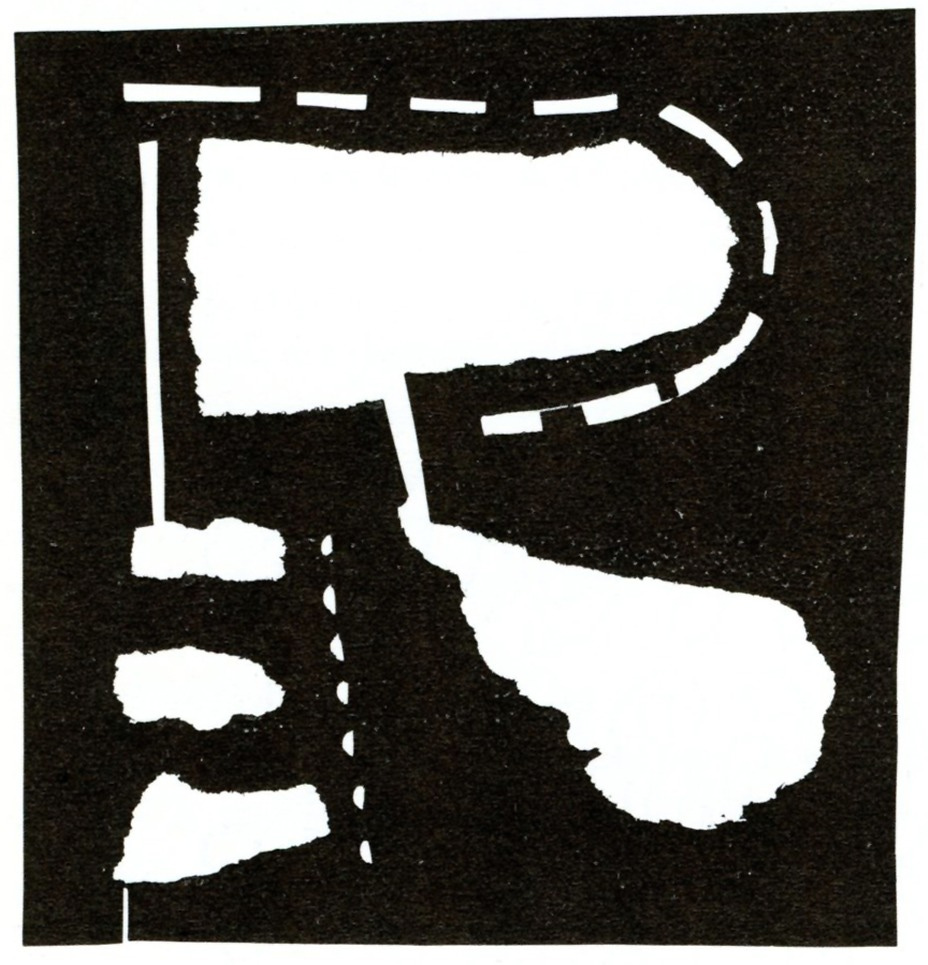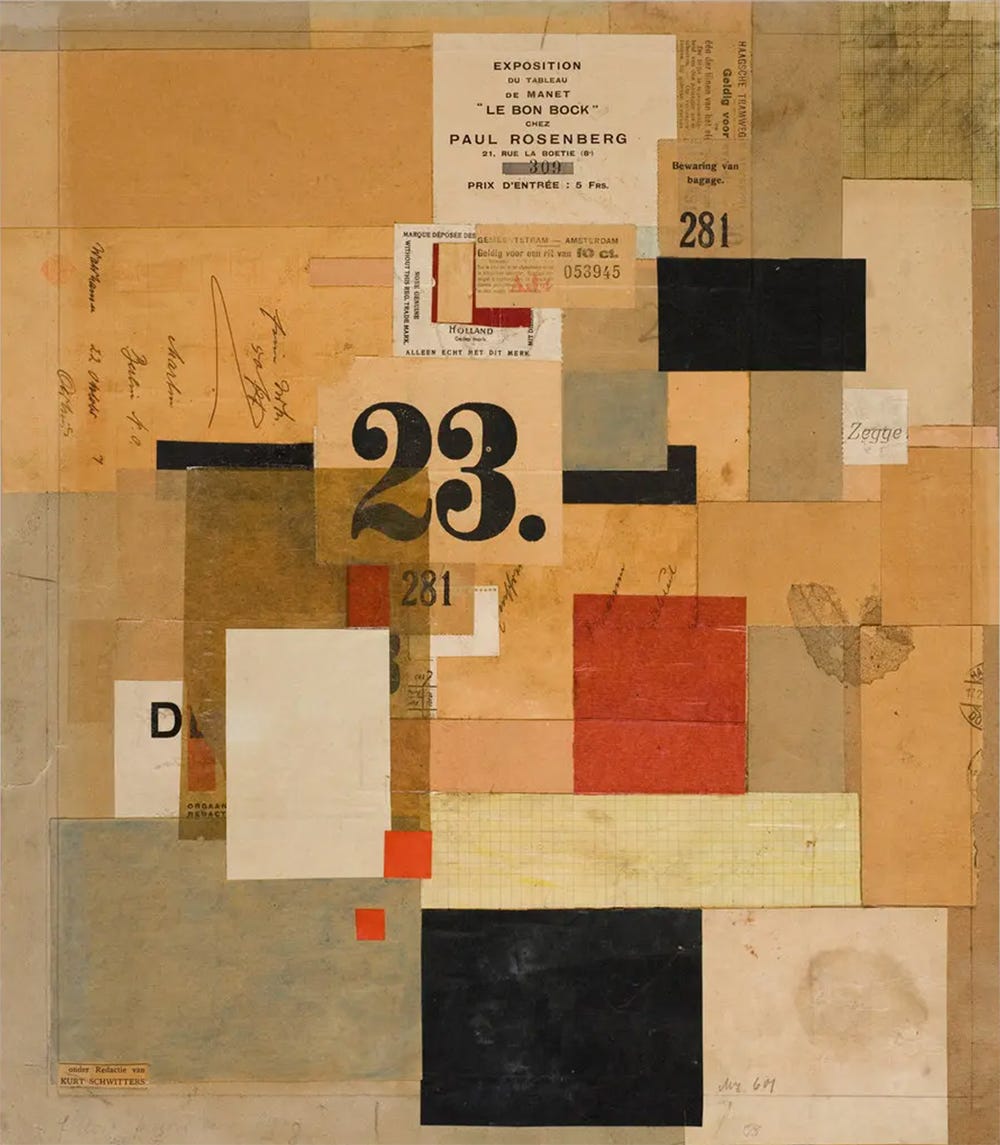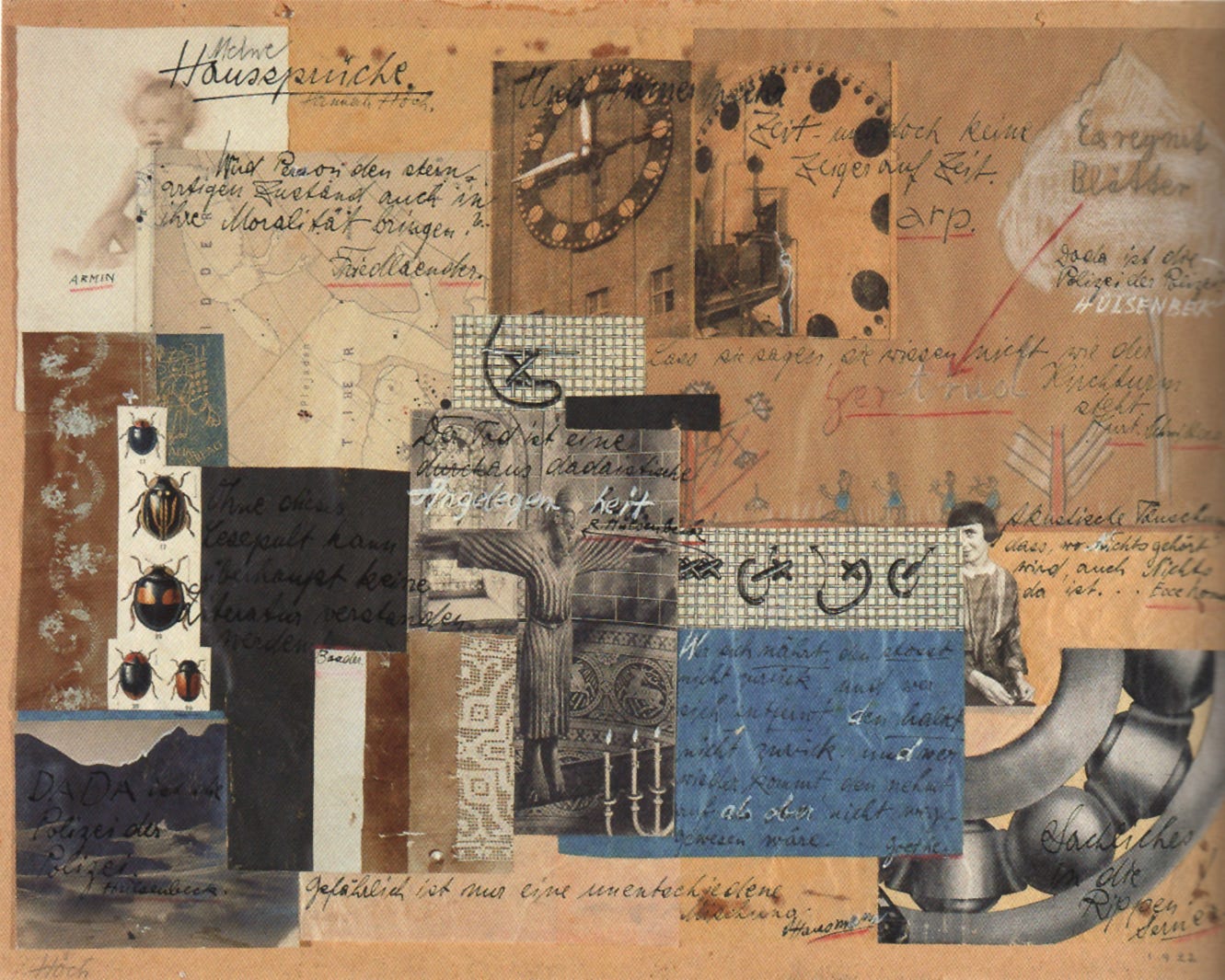Collage and Handlettering
A world to enter. A place to stay. For the orderly mind. Onion layers.
Brody Neuenschwander has a special touch with calligraphy that is elegantly combined with collage. He is a master of text art, texture, and composition, and captures the immediacy of gesture and the “fleeting nature of language.” His collage work bears a very close look!
The well-used studio contains an abundance of materials.
As artists produce, a sense of chaos may occur as tools and materials grow in number and the byproducts of effort mount in piles of tests, drafts, precious papers, and unfinished work. Early goals are achieved, and then what? Get more space? Reorganize, repurpose? These materials are candidates for collage. You’ve made them, chosen them, understood their meaning, and can reuse them well, especially if they are organized. Using your work in a new way is powerful. It lets you create from a different angle.
Today I talk about collage, surface, and composition as it relates to letterform. The calligrapher focuses on learning everything possible from each script. We work until something is fresh, juxtaposed well, effective, beautiful, unassailable in form. We write our way through history, tackling every alphabet, to be prepared to express thoughts however we want, with informed nuance. The world of art is infinite. But we must choose and assemble.
Building a collage
Where do the alphabets live? On the page. The page holds the words. And the surface of the page can be modular, textured, colored, layered, and assembled in ways that follow a sense of development, synthesis, putting disparate elements together to create something new. Writing isn’t always just about writing. Collage is versatile; it appeals to the eclectic sense, the non-sense of unexpected juxtaposition, the surprise, the conveyance of feeling.
Imre Reiner
Here’s a whimsical letter R in torn and cut paper from the renowned Imre Reiner, a multi-disciplined artist who widened the field of graphic design and typography in the mid-20th century. He set a certain style for hand-drawn letters.
Antoni Tapies
Antoni Tàpies included symbols, letters, and numerals in his huge earthy paintings, collages, and constructions. This one is paper with paper attached, with drawn marks.
Kurt Schwitters
The origins of well organized collage art trace back to Kurt Schwitters. Strictly rectangular hierarchy draws attention to letters and numbers as they float in his well-known collage, MZ601, 1923.
Here’s how I see Schwitters’ expert use of design principles in this collage:
Progression from larger elements at bottom, smaller toward the top
Intensity of red elements from smaller bright to larger more neutral shades of red
Progression of numerals and letters in the picture plane, from larger central to smaller more distant; from close on top to further away underneath or obscured
Elements of interest to solve each corner
Typefaces and handwritten elements distributed to balance the composition
Bluish and cool gray elements distributed to balance
Warmer elements distributed to balance, alternating with the cool
Darker and black elements underlapping or overlapping, creating spatial tensions
Density of rich color and contrast centralized within the active area, a pyramid hierarchy
Heavy black anchoring shape at bottom
Overlapping planes carefully placed, forming continuance and closure and avoiding spatial ambiguity
Diagonals hinted at by alignment of corners, but not explicitly drawn
I could go on and on about this beautiful composition!
Hannah Höch
Hannah Höch, 1889–1978, is known for her incisively political collages and photomontages, a form she helped pioneer. She appropriated and recombined images and text from mass media to critique popular culture, the failings of the Weimar Republic, and the socially constructed roles of women.
Cecile Touchon
Cecile Touchon is noted for his collage work based on typographic elements cut and joined as paper. He will replay his collage work on large canvases, still including paper elements to maintain the sense of collage and his love of paper. His work is monumental. He engages his audience with a puzzle. There are many wonderful images online as well as videos of him talking about his work. Highly recommend!

I hope this gives you some new ideas about where to go with your own work. And to appreciate what goes into a collage for your entertainment! Once collage takes you, there’s no going back.
Thank you all for reading and enjoying my posts. It’s great to be here with you.
NOTE TO ALL: This blogpost on Substack will always be free. I will never charge for the regular newsletters. Think of the “paid” area as more of a classroom or discussion area, where we can be a bit more interactive.
PAID SUBSCRIBERS: All paid subscriptions are now $75 annually or $7.50 monthly. I am eager to devote time to interactive projects and individual discussions on this basis. For you, it’s an ongoing investment in your research and graphic skills in the book arts, handwriting, and letterform/calligraphy. I will be posting exercises that you can follow and work with on your own and upload for feedback. It’s a floating classroom, and I hope you will find it helpful!
EDUCATIONAL DISCOUNT: I’m now offering a special 50% discount on the annual paid subscription for art instructors and those in the art education field.
A paid subscription gives you access to ongoing conversations on my chat feed, permanent access to all archives, and access to exercises and how-tos. Let’s continue to talk about art and keep it fed, nourished, and productive.














Thanks for this eloquent tour of some great artists. It’s wonderful to see Hannah Hoch especially. I was in Germany last fall and had numerous encounters with her work. Loving this!